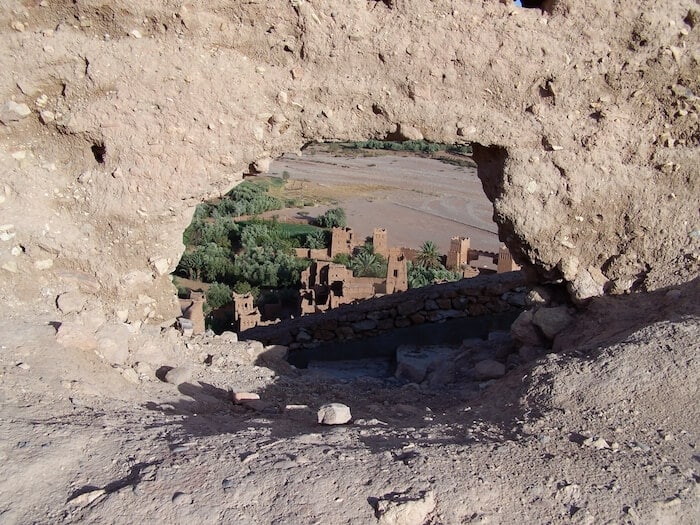
Two weeks in Morocco stop at Ait
You asked what our first impressions of Morocco were? Oh My God. It’s HOT. Two weeks in Morocco. In July. Didn’t we go to Egypt in June? Isn’t the definition of insanity doing the same thing again and expecting a different result. Well. And, it’s a Muslim country so we need to keep ourselves covered. Oh, and I forgot … what am I going to do about these hot flashes? This is going to be
Table of Contents
Two Weeks in Morocco Itinerary
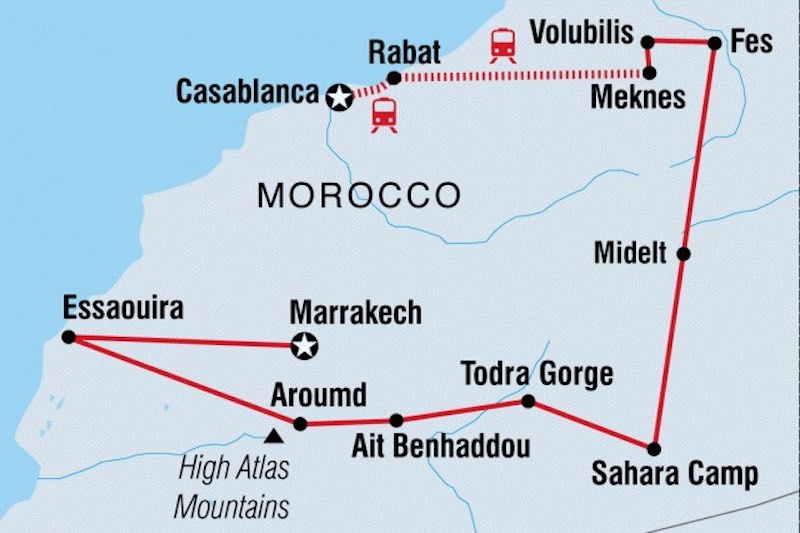
Two Weeks in Morocco Trip Map
7/29 Casablanca
7/30 Casablanca/Meknes
7/31 Rabat/Meknes/Fes
8/1 Fes
8/2 Fes/Midelt
8/3 Midelt/Sahara
8/4 Sahara/Todra Gorge
8/5 Todra Gorge
8/6 Todra Gorge/Ait Benhaddou
8/7 Ait Benhaddou/Imlil
8/8 Imlil/Essaouira
8/9 Essaouira
8/10 Essaouira/Marrakesh
8/11 Marrakesh
8/12 Marrakesh
8/13 Leave Marrakesh
Casablanca
The City of Movies. Casablanca. It brings to mind Humphrey Bogart saying “Here’s Looking at you Kid.” Or for us travelers, Bogart saying, “We’ll Always have Paris.”
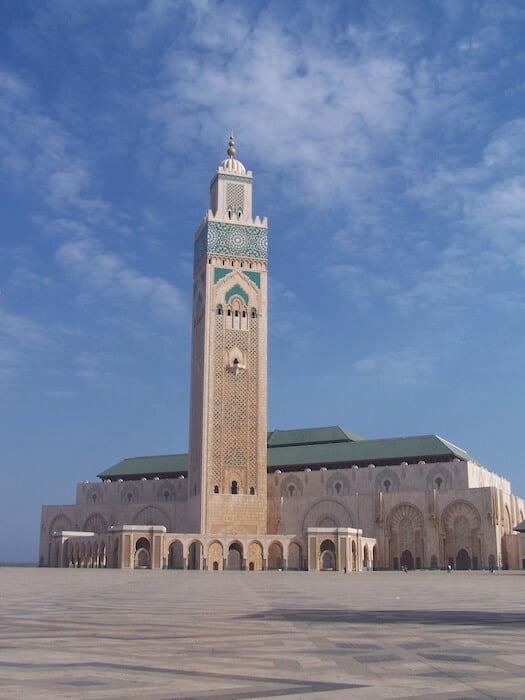
Two Weeks in Morocco started in Casablanca at the Hassan II Mosque
We arrived in Casablanca after stopping off in Paris (for more on our antics, or more correctly our sleeping arrangement in Paris, you’ll want to read Places We have Slept). The next morning we set off to visit the Hassan II Mosque–the third largest mosque in the world. During Ramadan, 25,000 people can pray inside and while 75,000 are outside. The structure was very impressive and it cost a fortune to build. It even has a retractable roof.
Rabat/Meknes
The next morning we were off to Meknes with a quick stop in Rabat. We had decided to do Morocco with a 12 person tour from Intrepid Travel. The one hour ride to Rabat went by quickly. And, Rabat was an easy introduction to our two weeks in Morocco. The Kasbah des Oudaya was beautiful and had amazing views. After that, we visited the Mausoleum for King Mohammed V which is the burial site for three members of the royal family–King Mohammed V and his sons King Hassan II and Prince Abdallah. The architecture is typical of the (current) Alaouite dynasty and is said to descend from Muhammad through his daughter.
But first, we had a three-hour train ride with no air conditioning. Did I forget to tell you it was July? And very hot? As in 38 degrees Celsius (about 100 degrees Fahrenheit). The beautiful countryside took our minds off the heat–desert, hills, some vegetation
Roman Ruins at Volubilis and Fez
We were very much looking forward to seeing the Roman ruins at Volubilis, a UNESCO World Heritage site. We packed hats, water, sunscreen and had an excellent guide. The mosaics and the ruins were truly amazing.
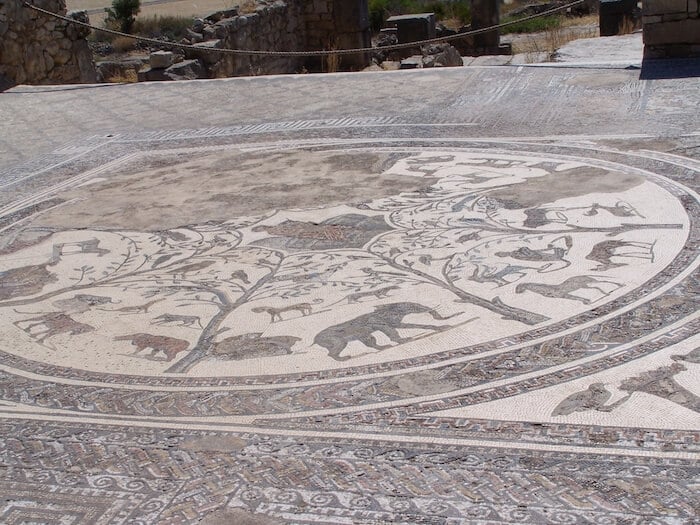
Volubilis is a Roman
Volubilis was a Berber City from about 300 BC to 100 AD,
Onward to Fez
I now feel obligated to share that the air conditioning on our bus broke.
Other the other hand, Fez was amazing. We saw the iconic view of the leather tanneries, got lost wandering the medina and had a
The Sahara
I love deserts and sleeping in the Sahara was top on my bucket list. I thought being in the desert and sleeping among the immense the dunes would be peaceful and quiet. And impressive at the same time.
We drove from Fez to Merzouga, the last town before the Sahara. Since it was summer and it was 125 degrees in the desert during the day,
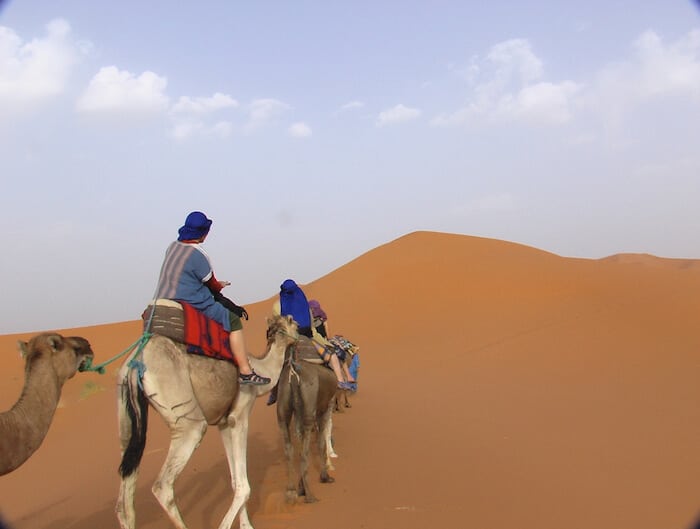
Sahara Desert
The ride on the camel through the desert was fun. Reggie’s camel kept coming up to my camel to socialize. The Erg Chebbi dunes were beautiful and very large. When we arrived at the camp, some of us climbed a large sand dune. It made me appreciate being on the camel. It’s not that easy to climb a sand dune.
We had a wonderful tagine for dinner and listened to the Berbers play drums. Then
Todra Gorge–The Grand Canyon of Morocco to Ait Benhaddou
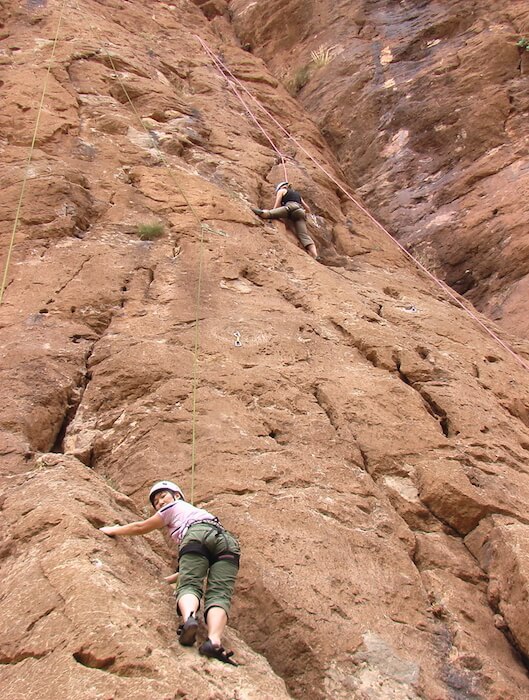
Reggie up on the Rock Wall in Todra Gorge
Todra Gorge was a lot of fun. The highlight was rock climbing up the cliffs. None of us made it all the way to the top, but we had great fun. We hiked around and generally enjoyed the change of scenery from the desert.
After an overnight stay in Todra Gorge, it was back to the movies. On the way to Ait-Ben Haddou, we stopped at Atlas Studios for a tour. The Gladiator, the Ten Commandments and many other films where shot at Atlas. Ait-Ben Haddou is a UNESCO World Heritage site. Caravans carrying salt stopped here on their way across the Sahara Desert.
Atlas Mountains
At last, relief from the heat. Up into the Atlas
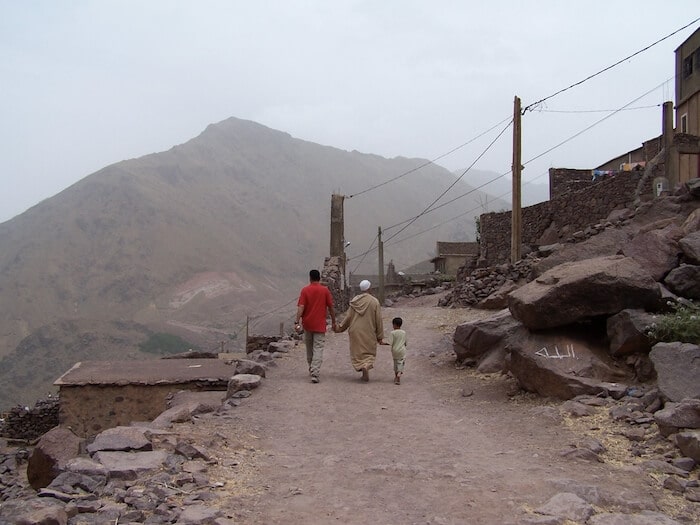
hour to the village of Aroumd. The views were spectacular. We spent the evening in a family run mountain home (gite). The host family couldn’t have been more welcoming and the food was delicious. All 12 of us slept in one room.
It was conflicting to be in the village as tourism is changing the way of life in the village
Essaouira–a Seaside Fishing Village with a Jewish History
We hiked down from the Atlas Mountains and drove to Essaouira the next day. It was one of my favorite places in Morocco–a relaxing, breezy place. Jews and Muslims lived and worked together for centuries in Essaouira. After Israel was founded in 1948, 80% of the Jewish population left. The remainder left after the 1967 war.
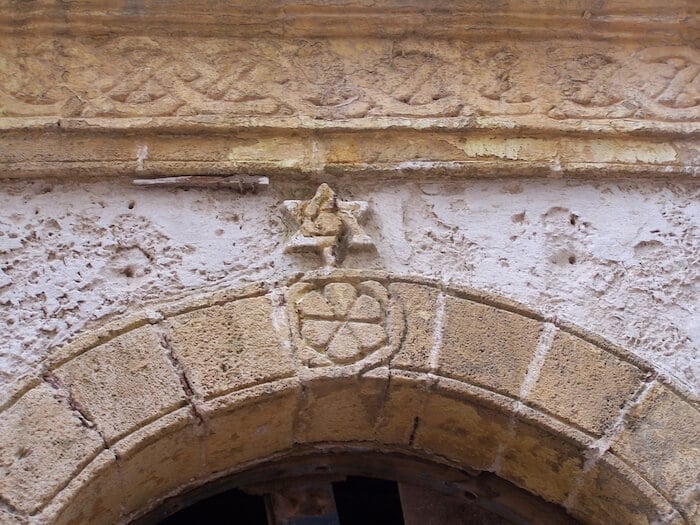
Star of David in the old Jewish Quarter
There are basically no Jews living in Essaouira now. We toured the old Jewish quarter, called a Mellah, and saw many buildings with Jewish stars. We also visited a Jewelry maker that used to be a joint effort of Jewish and Moroccan jewelry makers. Many of the people met expressed a sadness that the Jewish community left and wished to go back to a time when Jews and Muslims could live together peacefully.
From Quiet and Slow to…Marrakech
After Essaouira,
We went to Djemaa el Fna for dinner, a huge
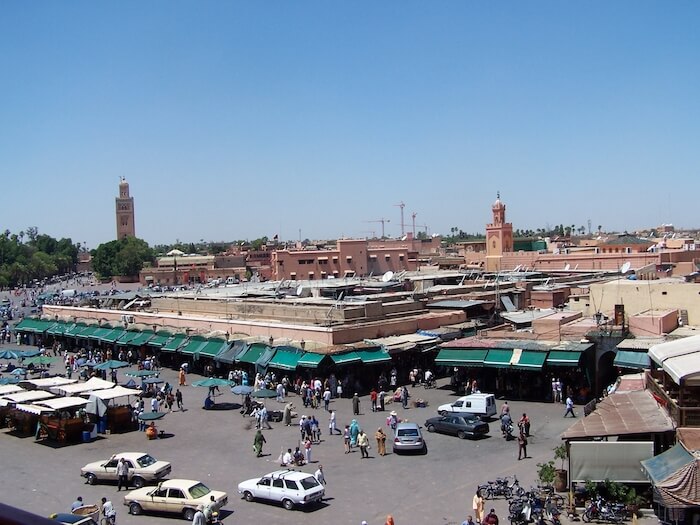
After two weeks in
We managed to find the Medersa (Koranic school) and the Museum of
Back to the States
Overall, we had a fantastic time in Morocco. It was great to have two weeks in Morocco to be able to see and experience the Medinas and Kasbahs, the Sahara desert, the Atlas Mountains to the seaside town of Essaouira. The graciousness of the Moroccan people was very touching. We also learned how to play (and mostly lose) Uno. I can still hear one of our guides saying “sorry madame” every time he gave me a million cards.
We survived the heat and we definitely appreciated the AC when we returned to New York.
Travel Tips for Two weeks in Morocco
- A week or 9 days is not enough time to see the whole country. Two weeks in Morocco is perfect.
- Don’t go in July. Or June. Or August. It is simply too hot and that will impact on your enjoyment.
- Make sure to bring comfortable and modest clothing. Morocco is a Muslim country and you need to be respectful.
- Bring a lot of
sunscreen , a hatand sunglasses. - Make sure that you have a good amount of cash and small bills. You can’t use credit cards in small shops and medinas. Cab drivers and small shops will not be able to make
change . - You are expected to haggle, so don’t be afraid to do so.
- Everyone on our trip became sick at some point during the trip (I actually didn’t get sick until the last day when I ate at a western restaurant) so make sure to bring
imodium , charcoal pills and anything else that you need. You’ll also want to have hand sanitizer and toilet paper on you at all times. - Make sure that you have any medicine and personal care items that you need for the entire trip. In some of the more rural places, it will be difficult to purchase them.
- There was a lot of driving
in our trip and we did not mind it (except when the air condition broke). It is pretty easy to get around the country by train, bus or car. Language can be a barrier if you are on your own. It is worth it to hire a guide or go with a group. - As a gay couple, we prefer to travel in a group when we are traveling in a Muslim country. It is illegal to be gay in many countries (not just Muslim ones). And, two women traveling alone can get hassled a great deal by men. We feel safer and it is easier to navigate sharing a room (and avoiding being given two single beds). The Intrepid guide did a very good job of navigating this.
Interested in seeing other countries in Africa? Read this post on Safest Countries in Africa–A Completed Overview

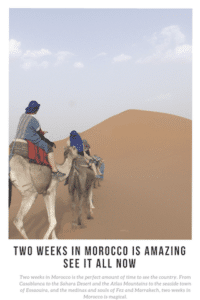
Very interesting…Morocco is a country I would like to visit. I did not get whether you went with a tour or on your own.
Thanks a lot for this great post. This is what I was looking for in order to plan a life-long dreamed itinerary to Morocco!
Thanks!
thanks for this words about your experience trip in Morocco.
Thanks!
I loved Morocco, especially Marracech and Essaura. Thanks for detailed information and useful tips!
Sounds like you had a blast even though it was super hot! I do travel occasionally but I get nervous if it’s over 7 days.
7 days is nice too
looking for flights now. =)
Have fun!
Very rich post. Thank you for this wonderful article. Feel free to contact us for any new adventure tour to Morocco
I went on this same Intrepid trip (best travel company ever!)! I agree with your assertion that you need about 2 weeks there, otherwise you’ll feel rushed. The country moves slowly and you need to adapt to it’s pace (with the exception of Marrakesh). I don’t know how you did your trip in July! You’re braver than me. 🙂
We loved intrepid too!
A great blog Sue, we’re here now and reading about your travels has reminded us of some places we must see. Although we are travelling by motorhome for two months so can take our time and we are very thankful to be here in the winter time.